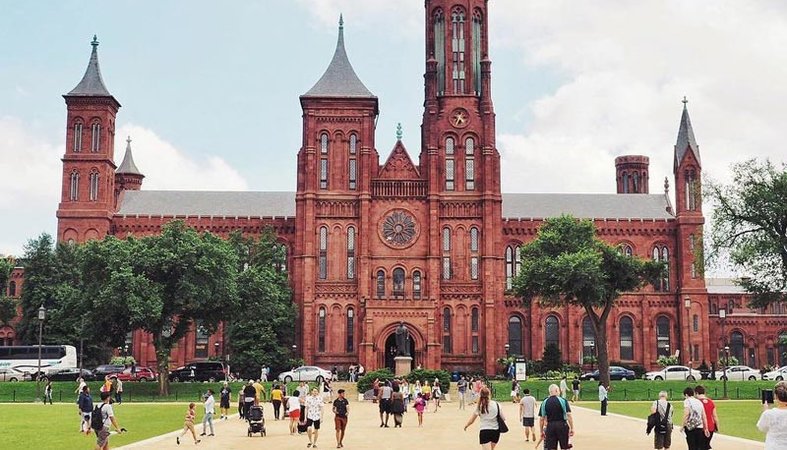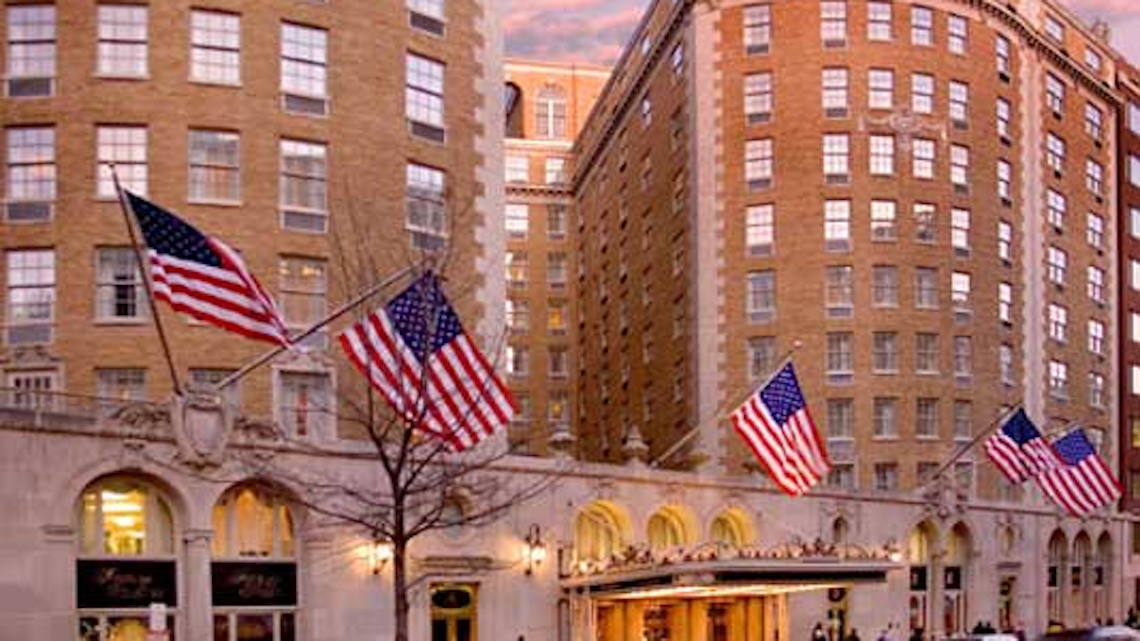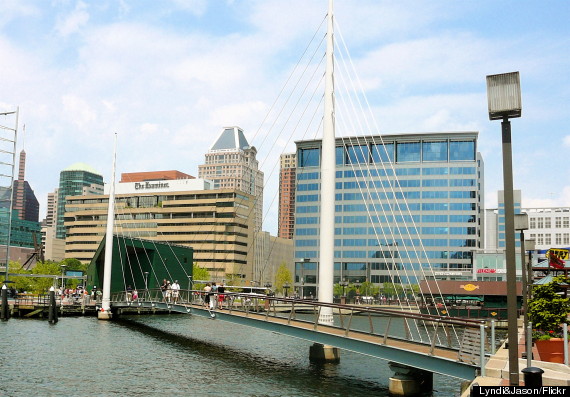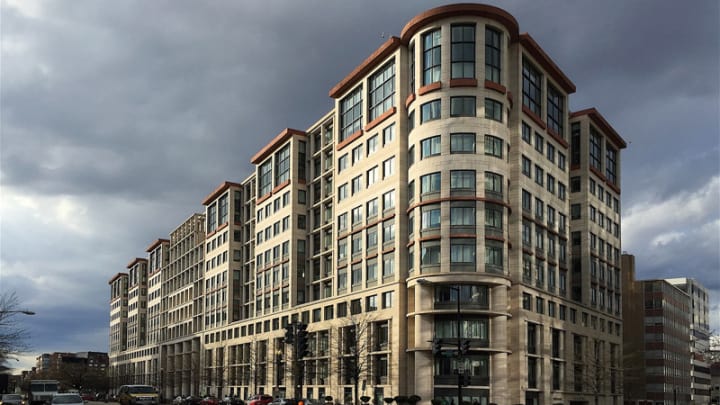DELAWARE (Wilmington, Dover, Rehoboth Beach)
Rehoboth Beach (pop 1,327). On the Atlantic Ocean, it is a popular regional vacation destination. Rehoboth Beach’s seasonal population expands to over 25,000 within the city limits and thousands more in the surrounding area in the summer. Out of the 30 states with coastline, the Delaware Beaches ranked number one for water quality in 2011.
Milton (pop 575). A manufacturing, resort and residential town, the town was settled in 1760. The high concentration of water powered industries in Milton, there was a concentration of leatherboard and vulcanized fibre mills The town contains some distinctive architecture, particularly the Milton Town House, built in 1808, and the Milton Free Public Library, a Second Empire former schoolhouse built at Milton Mills in 1875. Milton is drained by the Salmon Falls River.
WILMINGTON
Hotel Du Pont
NOMAD MANIA United States – Delaware (Wilmington, Dover, Rehoboth Beach)
House Museums/Plantations: Winterthur: Winterthur
Castles, Palaces, Forts: Delaware City: Fort Delaware
Maritime/Ship Museums
Fenwick Island: Discover Sea Shipwreck Museum
Cannonball House Maritime Museum
Cities of the Americas
WILMINGTON
Museums
Delaware Art Museum
Delaware Children’s Museum
Delaware Museum of Natural History
The Delaware Contemporary
Winterthur Museum
House Museums/Plantations: Nemours Mansion and Gardens
Hospitality Legends: Hotel Du Pont
Villages and Small Towns
MILTON
REHOBOTH BEACH AND LEWES
Beaches: Rehoboth Beach
DOVER*
Museums
Dover: Biggs Museum of American Art
Dover: Delaware Air Mobility Museum
Aviation Museums: Air Mobility Command Museum
++++++++++++++++++++++++++++++++++++++++++++++++++++++++++++++
DISTRICT OF COLUMBIA (Washington DC) (pop 703,000)
Washington, D.C., formally the District of Columbia and commonly referred to as D.C., is the capital of the United States. Founded after the American Revolution as the seat of government of the newly independent country, Washington was named after George Washington, the first president of the United States and a Founding Father. As the seat of the United States federal government and several international organizations, Washington is an important world political capital. The city, located on the Potomac River bordering Maryland and Virginia, is one of the most visited cities in the world, with more than 20 million tourists annually.
The signing of the Residence Act on July 16, 1790, approved the creation of a capital district located along the Potomac River on the country’s East Coast. The U.S. Constitution provided for a federal district under the exclusive jurisdiction of the U.S. Congress, and the District is therefore not a part of any U.S. state. The states of Maryland and Virginia each donated land to form the federal district, which included the pre-existing settlements of Georgetown and Alexandria. The City of Washington was founded in 1791 to serve as the new national capital. In 1846, Congress returned the land originally ceded by Virginia, including the city of Alexandria; in 1871, it created a single municipal government for the remaining portion of the District.
Commuters from the surrounding Maryland and Virginia suburbs raise the city’s daytime population to more than one million during the workweek. Washington’s metropolitan area, the country’s sixth largest (including parts of Maryland, Virginia and West Virginia), had a 2017 estimated population of 6.2 million residents.
All three branches of the U.S. federal government are centered in the District: Congress (legislative), the president (executive), and the Supreme Court (judicial). Washington is home to many national monuments and museums, primarily situated on or around the National Mall. The city hosts 177 foreign embassies as well as the headquarters of many international organizations, trade unions, non-profits, lobbying groups, and professional associations, including the World Bank Group, the International Monetary Fund (IMF), the Organization of American States, AARP, the National Geographic Society, the Human Rights Campaign, the International Finance Corporation, and the American Red Cross.
A locally elected mayor and a 13‑member council have governed the District since 1973. However, Congress maintains supreme authority over the city and may overturn local laws. D.C. residents elect a non-voting, at-large congressional delegate to the House of Representatives, but the District has no representation in the Senate.
I spent 4 days in Washington in 2009 and saw all the Smithsonian museums, all free.
Smithsonian Castle (Smithsonian Institution Building). It houses the Smithsonian Institution’s administrative offices and information center. The building is constructed of Seneca red sandstone in the faux Norman style (a 12th-century combination of late Romanesque and early Gothic motifs; built in the Gothic and Romanesque revival styles and is nicknamed The Castle. It was completed in 1855.
 National Cathedral (Cathedral Church of Saint Peter and Saint Paul) is an American cathedral of the Episcopal Church. The structure is of Neo-Gothic design. It is both the third-largest church building in the United States, and the fourth-tallest structure in Washington, D.C. Over 270,000 people visit the structure annually.
National Cathedral (Cathedral Church of Saint Peter and Saint Paul) is an American cathedral of the Episcopal Church. The structure is of Neo-Gothic design. It is both the third-largest church building in the United States, and the fourth-tallest structure in Washington, D.C. Over 270,000 people visit the structure annually.
Construction began in 1907 and ended 83 years later when the “final finial” was placed in the presence of President George H. W. Bush in 1990.

The following buildings are in the NM “Modern Architecture Buildings” series.
Capitol Hill.
White House.
IFC headquarters. The International Finance Corporation (IFC) is an international financial institution that offers investment, advisory, and asset-management services to encourage private-sector development in less developed countries. Built in 1995-6, the 13-story building in 47m high.
The IFC is a member of the World Bank Group established in 1956. The IFC’s stated aim is to create opportunities for people to escape poverty and achieve better living standards by mobilizing financial resources for private enterprise, promoting accessible and competitive markets, supporting businesses and other private-sector entities, and creating jobs and delivering necessary services to those who are poverty stricken or otherwise vulnerable. The IFC is owned and governed by its member countries.
IFC comes under frequent criticism from NGOs that it is not able to track its money because of its use of financial intermediaries. Another criticism is IFC working excessively with large companies or wealthy individuals, for example granting financing to a Saudi prince for a five-star hotel in Ghana.
Several hotels in Washington are in the NM “Hospitality Legends” series:
Omni Shorehan Hotel. In Northwest Washington, D.C., it was built in 1930. The third-floor suite (the Franklin D. Roosevelt suite) he and his family stayed in was fully enclosed, and the glassed-in balcony can still be seen to this day. On 10 February 1964, The Beatles booked the entire 7th floor of the hotel for one evening.
A minority financial partner, Doherty and his family moved into an apartment (now Suite 870) in the hotel, along with their maid, Juliette Brown. A few months later, their maid died in the night and a short time later, the Dohertys’ daughter Helen also died in the suite. The Dohertys moved out, and the apartment remained unoccupied for almost 50 years. The apartment was renovated into a hotel suite. But guests and hotel staff began to tell stories of faint voices, cold breezes, doors slamming shut and opening of their own accord, and televisions and lights turning on and off on their own. The Omni Shoreham Hotel has named the room the “Ghost Suite”.
The Fairfax at Embassy Row Hotel. Opened in 1927, it operated as a combination transient/residential hotel and was the home of numerous government figures: Mrs. Henry Cabot Lodge, future President George H.W. Bush and his parents, Senator and Mrs. Prescott Bush, lived at The Fairfax when in Washington. Future Vice President Al Gore’s family lived in the three-bedroom suite on the hotel’s top floor for a total of twenty years during his youth. It was the only establishment with kitchens that fell within the limited temporary-housing allowance. The hotel was in bankruptcy from 1986 until 1988 and has had several owners since.
The Jockey Club restaurant opened in the Fairfax in 1961 and has remained one of the city’s most famous watering holes for the rich and politically powerful for decades. The Jockey Club closed in 2001 and is now a breakfast room called The Capitol Room.
The Mayflower Hotel is a historic hotel in downtown Washington, D.C., the largest luxury hotel in the District of Columbia and the longest continuously operating hotel in the Washington D.C. area. The Mayflower is known as the “Grande Dame of Washington”, the “Hotel of Presidents”, and as the city’s “Second Best Address” (the White House is the first)—the latter sobriquet attributed to President Harry S. Truman (a frequent guest at the hotel).However, today it is only a four-star hotel.
The Willard InterContinental Washington is a historic luxury Beaux-Arts hotel located at 1401 Pennsylvania Avenue NW in Washington, D.C. Among its facilities are numerous luxurious guest rooms, several restaurants, the famed Round Robin Bar, the Peacock Alley series of luxury shops, and voluminous function rooms. Room rates range from $425 to $8,000 per night.
The present 12-story structure opened in 1901. It closed in 1968 and sat vacant for years, but was subsequently restored to its turn-of-the-century elegance. 

Washington DC Union Station. Opened in 1907, it is Amtrak’s headquarters and the railroad’s second-busiest station with annual ridership of just under 5 million and the ninth-busiest in overall passengers served in the United States. The station is the southern terminus of the Northeast Corridor, an electrified rail line extending north through major cities including Baltimore, Philadelphia, New York City, and Boston and the busiest passenger rail line in the nation.
The façade stretches more than 600 ft (180 m), the waiting room ceiling is 96 ft (29 m) above the floor and stone inscriptions and allegorical sculpture in the Beaux-Arts style; expensive materials such as marble, gold leaf, and white granite from a previously unused quarry.
An intermodal facility, Union Station also serves MARC and VRE commuter rail services, the Washington Metro, the DC Streetcar, intercity bus lines, and local Metrobus buses.
In 1988, the original station renovated for use as a shopping mall. Today, Union Station is one of the busiest rail facilities and shopping destinations in the United States, and is visited by over 40 million people a year.

WASHINGTON DC World Capitals, World Cities and Popular Towns
Railway, Metro, Funiculars, Cable Cars
Washington DC Streetcar
Washington DC Union Station
Washington Metro
Museums
Gallery of Art
Freer and Sackler Galleries
Hirshhorn Museum
International Spy Museum
Gallery of Art
National Geographic Museum
National Law Enforcement Museum
National Museum of African American History and Culture
National Museum of American History
National Museum of Natural History
National Museum of the American Indian
National Portrait Gallery
Newseum
Phillips Collection
Renwick Gallery
Smithsonian American Art Museum
House Museums/Plantations: Dumbarton House
Castles, Palaces, Forts
Smithsonian Castle
White House
Religious Temples: Washington: National Cathedral
Modern Architecture Buildings
Capitol Hill
IFC headquarters
White House
Festivals
Washington DC: International Children’s Festival
Washington DC: National Cherry Blossom Festival
Zoos: Smithsonian’s National Zoo
Botanical Gardens
United States Botanic Garden
United States National Arboretum
Planetariums: Albert Einstein Planetarium
Hospitality Legends
Churchill Hotel
Omni Shorehan Hotel
The Fairfax at Embassy Row Hotel
The Mayflower Hotel
The Willard InterContinental Washington
Markets: Eastern Market
Monuments
Franklin Delano Roosevelt Memorial
Korean War Veterans Memorial
Lincoln Memorial
Titanic Memorial
Vietnam Veterans Memorial
Aviation Museums: National Air and Space Museum
The Dark Side: United States Holocaust Memorial Museum
++++++++++++++++++++++++
MARYLAND (Baltimore, Annapolis, Frederick, Hagerstown)
Berlin (pop 4,485). Berlin had its start around the 1790s, and the name Berlin is believed to be derived from a contraction of “Burleigh Inn”, a tavern located at a crossroads. In the early 20th century, Berlin was known as a rest stop for travellers on their way to the coastal resort of Ocean City. Since the late 1980s, the town’s historic downtown was revitalized to feature nearly two centuries of architectural heritage from three distinct periods.
Two major motion pictures have been filmed in Berlin’s historical downtown district: Runaway Bride (1999), starring Richard Gere and Julia Roberts and Tuck Everlasting (2002), starring Sissy Spacek, Ben Kingsley, and William Hurt. Berlin was the home of the great racehorse Man o’ War (1917- 1947).
Ocean City. Is famous for its classic three mile long wooden boardwalk, listed as one America’s ten best and known for its food. It dates back to 1902 as a wooden walkway that was removed at high tide and stored on the hotel porches. In 1910, a more permanent boardwalk was created that was destroyed in the great storm of 1962, rebuilt to its current length and in 2010, underwent a complete renovation whereby the old splintering and rotten boards were replaced with new wood, while retaining the old-fashioned feel. There are amusements, arcades, food, shopping, surfing and thousands of hotel, motel and condominium boardwalk accommodation.
I then drove north through south New Hampshire and returned to Maryland.
Easton (pop 16,500). In 1916, the town erected a statue in honor of Confederate soldiers and in 2011, added a statue of Frederick Douglass, the noted abolitionist, who was born a slave in 1818 at Wye House plantation near Easton. Located on the eastern shore of Chesapeake Bay, Easton was named one of America’s top 5 coolest towns to buy a vacation home by Forbes. Landmarks include Avalon Theatre, Trinity Cathedral, All Saints’ Church and Third Haven Friends Meeting, built in 1684 and still in use.
Kent Island is the largest island in Chesapeake Bay (31.6 square miles) and a historic place in Maryland. To the east, a narrow channel known as the Kent Narrows barely separates the island from the Delmarva Peninsula, and on the other side, the island is separated from Sandy Point, an area near Annapolis, by roughly four miles (6.4 km) of water. At only four miles wide, the main waterway of the bay is at its narrowest at this point and is spanned here by the Chesapeake Bay Bridge.
The first English establishment on the island, Kent Fort, was founded in 1631, making Kent Island the oldest English settlement within the present day state of Maryland and the third oldest permanent English settlement in what became the United States—after Jamestown, Virginia (1607), and Plymouth, Massachusetts (1620).
Annapolis (pop 38,500) is the capital of Maryland. The Maryland State House is the oldest in continuous legislative use in the United States dating from 1779. It is topped by the largest wooden dome built without nails in the country.
Situated on the Chesapeake Bay at the mouth of the Severn River, 25 miles (40 km) south of Baltimore and about 30 miles (50 km) east of Washington, D.C.. the city served as the temporary national capital of the United States in 1783–1784. Annapolis is the home of St. John’s College, founded in 1696 and the United States Naval Academy, established 1845, is adjacent to the city limits.
During September 18–19, 2003, Hurricane Isabel created the largest storm surge known in Annapolis’s history, cresting at 7.58 feet (2.31 m). Much of downtown Annapolis was flooded and many businesses and homes in outlying areas were damaged.
From Annapolis, I returned to Virginia to see Mount Vernon and Arlington.
BALTIMORE (pop 603,000, metropolitan 2.8 million). Baltimore is located about 40 miles northeast of Washington, D.C., The city’s Inner Harbor was once the second leading port of entry for immigrants to the United States. In addition, Baltimore was a major manufacturing center. After a decline in major manufacturing, heavy industry, and restructuring of the rail industry, Baltimore has shifted to a service-oriented economy. Johns Hopkins Hospital (founded 1889) and Johns Hopkins University (founded 1876) are the city’s top two employers. Baltimore’s population is 63.7% Black, 29.6% White, 2.3% Asian. 23.7% of the population lived below the poverty line, compared to 13.5% nationwide. Housing in Baltimore is relatively inexpensive for large, coastal cities of its size with the median sale price for homes in Baltimore in 2012 was $95,000. The homeless population exceeded 4,000 people in 2011 with the increase in the number of young homeless people was particularly severe.
Crime in Baltimore, generally concentrated in areas high in poverty, has been far above the national average for many years with high homicide rates (344 homicides in 2015 represented the highest homicide rate in the city’s recorded history and the second-highest for U.S. cities behind St. Louis and ahead of Detroit and as of 2018, higher than that of El Salvador, Guatemala, or Honduras). Drug use and deaths by drug use (particularly drugs used intravenously, such as heroin) are a related problem which has crippled Baltimore for decades. Among cities greater than 400,000, Baltimore ranked 2nd in its opiate drug death rate in the United States behind Dayton, Ohio. The DEA reported that 10% of Baltimore’s population – about 64,000 people – are addicted to heroin.
The 2018 surge in murders are related to the charge of six city police officers following the death of Freddie Gray after he fell into a coma while in police custody in April 2015. The Baltimore police were told they would be put in jail for making a bad arrest. So officers figured it out: ‘I can go to jail for making the wrong arrest, so I’m not getting out of my car to clear a corner,’ and that’s exactly what happened post-Freddie Gray. In Baltimore, “arrest numbers have plummeted from more than 40,000 in 2014, the year before Gray’s death and the subsequent charges against the officers, to about 18,000 as of November 2017, even as homicides soared from 211 in 2014 to 344 in 2015.
On February 7, 1904, the Great Baltimore Fire destroyed over 1,500 buildings in 30 hours, leaving more than 70 blocks of the downtown area burned to the ground. Damages were estimated at $150 million—in 1904 dollars. By the beginning of the 1970s, Baltimore’s downtown area known as the Inner Harbor had been neglected and was occupied by a collection of abandoned warehouses and has been extensively redeveloped. The Baltimore Orioles baseball team uses Camden Yards and the Baltimore Ravens football team M&T Bank Stadium next to Camden Yards. Baltimore has more public statues and monuments per capita than any other city in the US. Nearly one third of the city’s buildings (over 65,000) are designated as historic in the National Register, which is more than any other U.S. city.
Mr. Trash Wheel, installed in 2014 at the mouth of the Jones Falls River, is a permanent water wheel trash interceptor to clean up the city’s polluted Inner Harbor. The wheel moves continuously, removing garbage and dumping it into an attached dumpster using only hydro and solar renewable power to keep its wheel turning. It has removed more than 350 tons of litter from Baltimore’s landmark and tourist attraction in its first 18 months, estimated as consisting of approximately 200,000 bottles, 173,000 potato chip bags and 6.7 million cigarette butts. Baltimore was the first city to use reclaimed waterway debris to generate electricity.
Fort McHenry is a historical American coastal pentagonal bastion fort located in the Locust Point neighborhood of Baltimore. It is best known for its role in the War of 1812, when it successfully defended Baltimore Harbor from an attack by the British navy from the Chesapeake Bay on September 13–14, 1814. It was first built in 1798 and was used continuously by the U.S. armed forces through World War I and the Coast Guard in World War II. It was designated a national park in 1925, and in 1939 was redesignated a “National Monument and Historic Shrine”.
Lord Baltimore Hotel. In downtown Baltimore, it was opened in 1928. Rooms cost $3.00 and up with a radio in every one of its 300 rooms. The 22 story hotel, designed in the French Renaissance style, has a dark red brick veneer with limestone trim, is 289 feet tall and is topped with a tower / cupola featuring a mansard roof of copper.
It closed in 1982, was renovated and has had 7 separate owners since.
Pedestrian Bridge at Inner Harbor. Over Jones Falls at Inner Harbor, the bridge links the waterside trail from Fells Point through Harbor East to the popular National Aquarium.
 Baltimore Penn Station. Constructed in 1911 and dating from the Gilded Age of architecture when railroads were the economic force and train stations were monuments to civic pride. In the Beaux-Arts style, it features a granite and terracotta exterior and an interior of Sicilian marble walls, domed skylights of leaded glass and Rookwood ceramic tiles.
Baltimore Penn Station. Constructed in 1911 and dating from the Gilded Age of architecture when railroads were the economic force and train stations were monuments to civic pride. In the Beaux-Arts style, it features a granite and terracotta exterior and an interior of Sicilian marble walls, domed skylights of leaded glass and Rookwood ceramic tiles.


It is about a mile and a half north of downtown and the Inner Harbor and is the eighth-busiest rail station in the United States by number of passengers served each year.
Fort Frederick State Park. Big Pool. On the Potomac River, the fort is a large stone quadrangle with bastions at each corner. Two of the three barracks buildings have been restored. The design of the fort conforms to the style developed early in the 18th century by Sebastien de Vauban, a French military engineer who is considered the father of modern fortification.[6]
Fort Frederick was built in 1756-57 by the colony of Maryland. During the French and Indian War (1754–1763), the large stone fort was designed primarily as a place of refuge for area settlers. Between 1757 and 1758, small raids by Indians in nearby settlements caused settlers in the surrounding countryside to flee eastward. The fort was not designed to resist artillery, as it was correctly assumed that the French would not be able to transport artillery to the remote location from the west. The fort served its purpose in 1763 during Pontiac’s Rebellion; however, the fort was never directly attacked.
During the American Revolutionary War, the fort was used as a prisoner of war camp from 1777 to 1783. As many as 1,000 captured British and German soldiers[7] were incarcerated there after the Battles of Saratoga (1777) and Yorktown (1781).
In the American Civil War, the fort was garrisoned at the outbreak of war and was used as a gun emplacement to protect the Chesapeake and Ohio Canal and the Baltimore and Ohio Railroad, which paralleled the canal. The military usefulness of the fort ended by 1862.
NOMAD MANIA United States – Maryland (Baltimore, Annapolis, Frederick, Hagerstown)
Islands: Kent Island (MD)
XL
Chesapeake Bay southern islands (Bloodsworth, Smith, Tangier)
Maryland western panhandle
House Museums/Plantations: Hollywood: Historic Sotterley Plantation
Castles, Palaces, Forts: Big Pool: Fort Frederick State Park
Religious Temples: Kensington: Washington D.C. Temple
Festivals
Baltimore: Artscape
Crownsville: Maryland Renaissance Festival
Thurmont: Catoctin Colorfest
Theme Parks: Bowie: Six Flags America
Maritime/Ship Museums
Cambridge: Richardson Maritime Museum
St. Michaels: Chesapeake Bay Maritime Museum
Aviation Museums: Middle River: Glenn L. Martin Maryland Aviation Museum
Cities of the Americas
BALTIMORE
Airports: Baltimore (BWI)
Railway, Metro, Funiculars, Cable Cars
Baltimore Light Rail
Baltimore Metro Subway
Baltimore Penn Station
Museums
American Visionary Art Museum
Baltimore Museum of Art
Baltimore Museum of Industry
Maryland Science Center
The Walters Art Museum
Castles, Palaces, Forts: Fort McHenry
Zoos: Maryland Zoo
Aquariums: National Aquarium
Hospitality Legends: Lord Baltimore Hotel
Pedestrian Bridges: Pedestrian Bridge at Inner Harbor
Maritime/Ship Museums: Maritime Museum/USS Constellation
Railway Museums: B&O Railroad Museum
Villages and Small Towns
BERLIN
EASTON
ANNAPOLIS
Maritime/Ship Museums: U.S. Naval Academy Museum
Museums: Banneker-Douglass Museum
